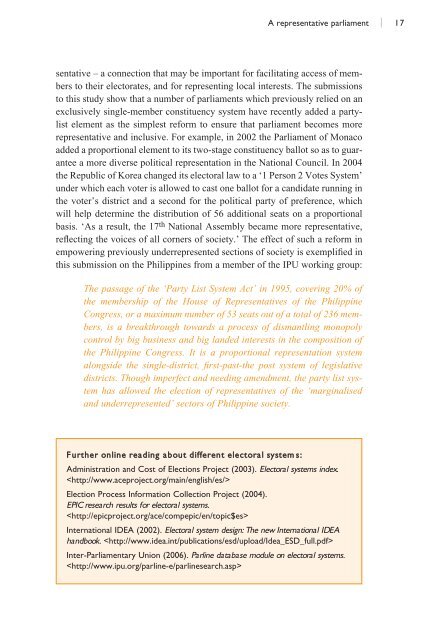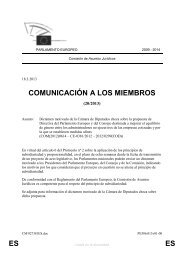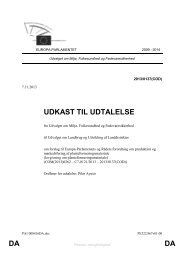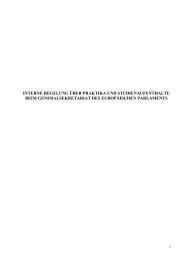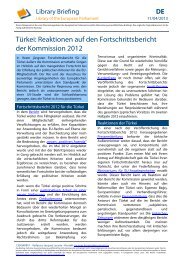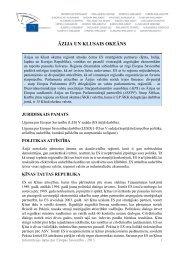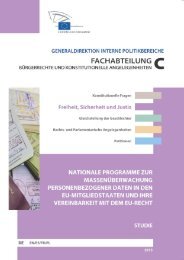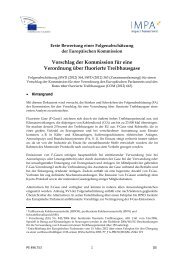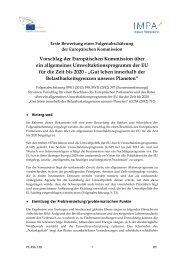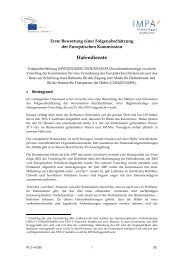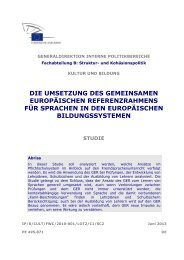PARLIAMENT AND DEMOCRACY - Inter-Parliamentary Union
PARLIAMENT AND DEMOCRACY - Inter-Parliamentary Union
PARLIAMENT AND DEMOCRACY - Inter-Parliamentary Union
Create successful ePaper yourself
Turn your PDF publications into a flip-book with our unique Google optimized e-Paper software.
A representative parliament I 17<br />
sentative – a connection that may be important for facilitating access of members<br />
to their electorates, and for representing local interests. The submissions<br />
to this study show that a number of parliaments which previously relied on an<br />
exclusively single-member constituency system have recently added a partylist<br />
element as the simplest reform to ensure that parliament becomes more<br />
representative and inclusive. For example, in 2002 the Parliament of Monaco<br />
added a proportional element to its two-stage constituency ballot so as to guarantee<br />
a more diverse political representation in the National Council. In 2004<br />
the Republic of Korea changed its electoral law to a ‘1 Person 2 Votes System’<br />
under which each voter is allowed to cast one ballot for a candidate running in<br />
the voter’s district and a second for the political party of preference, which<br />
will help determine the distribution of 56 additional seats on a proportional<br />
basis. ‘As a result, the 17 th National Assembly became more representative,<br />
reflecting the voices of all corners of society.’ The effect of such a reform in<br />
empowering previously underrepresented sections of society is exemplified in<br />
this submission on the Philippines from a member of the IPU working group:<br />
The passage of the ‘Party List System Act’ in 1995, covering 20% of<br />
the membership of the House of Representatives of the Philippine<br />
Congress, or a maximum number of 53 seats out of a total of 236 members,<br />
is a breakthrough towards a process of dismantling monopoly<br />
control by big business and big landed interests in the composition of<br />
the Philippine Congress. It is a proportional representation system<br />
alongside the single-district, first-past-the post system of legislative<br />
districts. Though imperfect and needing amendment, the party list system<br />
has allowed the election of representatives of the ‘marginalised<br />
and underrepresented’ sectors of Philippine society.<br />
Further online reading about different electoral system s:<br />
Administration and Cost of Elections Project (2003). Electoral systems index.<br />
<br />
Election Process Information Collection Project (2004).<br />
EPIC research results for electoral systems.<br />
<br />
<strong>Inter</strong>national IDEA (2002). Electoral system design: The new <strong>Inter</strong>national IDEA<br />
handbook. <br />
<strong>Inter</strong>-<strong>Parliamentary</strong> <strong>Union</strong> (2006). Parline database module on electoral systems.<br />


